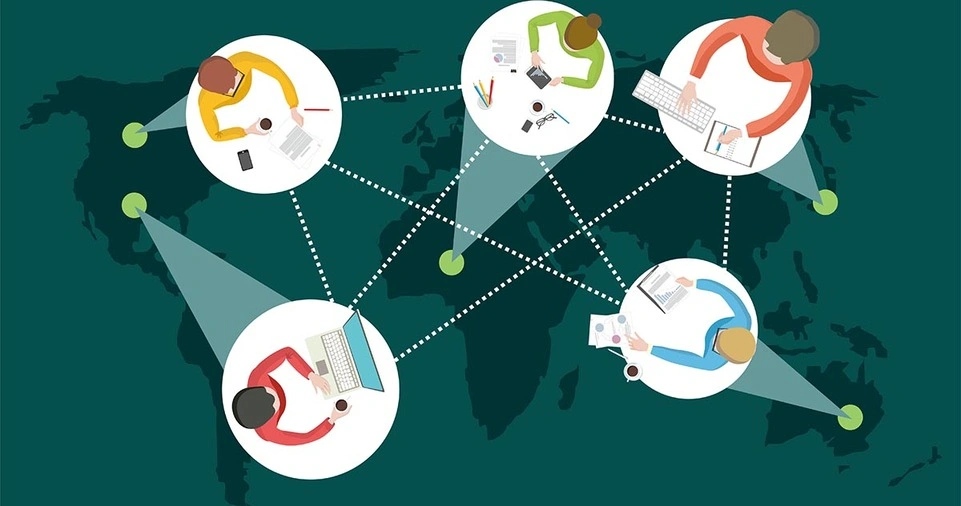Remote work has become an essential aspect of the modern workplace.
With businesses expanding globally, hiring talent from different parts of the world, and providing employees with the flexibility to work from home, remote team management has never been more crucial.
However, while remote work offers several benefits, it also presents unique challenges.
Managing a distributed team requires strong leadership, clear communication, the right technology, and a focus on results rather than mere activity.
Many companies struggle with productivity issues, lack of collaboration, and employee engagement when working remotely.
However, with proper strategies in place, organizations can achieve efficiency and high performance even with a remote workforce.
In this guide, we will explore effective ways to manage a remote team for maximum productivity.
From setting clear expectations to leveraging the right tools and fostering a positive work culture, this article will provide actionable insights to ensure your remote team stays motivated, accountable, and aligned with your business goals.
Set Clear Expectations
Define Roles and Responsibilities
One of the most critical factors in remote team management is clarity. Remote employees need well-defined roles and responsibilities to perform effectively.
Without clear expectations, confusion can arise, leading to missed deadlines and inefficiency.
Ensure that every team member understands their tasks and how they contribute to the company’s overall mission.
A well-structured onboarding process can also help set the tone for new employees, making it easier for them to integrate into the team.
Establish Performance Metrics
Setting Key Performance Indicators (KPIs) is essential for tracking productivity in a remote setting.
Rather than focusing on how many hours an employee spends online, shift your focus to their deliverables and outcomes.
Metrics such as project completion rates, customer satisfaction scores, and sales targets can provide better insight into an employee’s contribution.
Use data-driven insights to analyze performance trends and make necessary improvements.
Utilize the Right Tools

Communication Tools
Effective communication is the backbone of a successful remote team. Without face-to-face interactions, misunderstandings can arise, and collaboration may suffer.
Invest in robust communication tools to bridge the gap. Popular platforms such as Slack, Microsoft Teams, and Zoom enable real-time messaging, video calls, and team discussions.
These tools help create a connected work environment where employees can collaborate seamlessly, regardless of location.
Project Management Software
Keeping track of multiple projects and deadlines in a remote setting can be challenging.
Using project management software like Trello, Asana, or Monday.com can help managers assign tasks, track progress, and ensure accountability.
These platforms offer features like task prioritization, progress tracking, and deadline notifications, making it easier for remote teams to stay on schedule.
Time Management Tools
Time tracking tools like Toggl and Clockify can help remote teams stay accountable for their working hours.
While micromanaging employees is not advisable, time-tracking tools provide insights into how time is spent on tasks.
This data can help managers identify bottlenecks and optimize workflows for better efficiency.
Foster Strong Communication
Conduct Regular Check-Ins
To ensure alignment and address potential roadblocks, schedule regular check-ins with your remote team.
Weekly or daily stand-up meetings provide an opportunity for team members to share updates, discuss challenges, and seek feedback.
These meetings can also help foster a sense of accountability and motivation among employees.
Encourage Open Dialogue
Creating an open and transparent communication culture is crucial in a remote work environment.
Encourage employees to share their thoughts, concerns, and suggestions.
A virtual open-door policy where team members can reach out to managers anytime can improve trust and collaboration.
Balance Synchronous and Asynchronous Communication
While real-time meetings are essential, not all conversations require immediate responses.
Encourage asynchronous communication through emails, recorded video messages, and shared documents.
This approach allows team members in different time zones to contribute effectively without disrupting their workflow.
Promote Accountability and Autonomy
Empower Employees to Take Ownership
Giving employees the autonomy to manage their tasks enhances motivation and productivity.
Trusting your team members to make decisions fosters a sense of responsibility.
Instead of micromanaging, provide guidance and support when needed. Clearly defined goals and expectations enable employees to stay focused and self-driven.
Set Milestones and Deadlines
Breaking down projects into smaller milestones with clear deadlines helps remote teams stay organized.
Setting achievable goals ensures steady progress and prevents last-minute rushes. Regularly reviewing progress on these milestones keeps employees engaged and accountable.
ALSO READ: How to Use AI Tools to Boost Productivity at Work
Focus on Results, Not Hours Worked

Shift to Outcome-Based Evaluations
Rather than measuring productivity by the number of hours an employee works, focus on their deliverables.
Outcome-based evaluations ensure that employees are judged on the quality and impact of their work rather than their online availability.
This method promotes efficiency and flexibility while ensuring business objectives are met.
Encourage Flexible Work Hours
Different employees have different productivity patterns. Some perform better in the morning, while others excel at night.
Allowing flexibility in work hours enables employees to work when they are most productive, leading to better results and job satisfaction.
Build a Positive Work Culture
Organize Virtual Team-Building Activities
Fostering a strong company culture in a remote setting requires intentional efforts.
Virtual team-building activities such as online games, virtual coffee chats, and team challenges help strengthen relationships among remote employees. A sense of belonging boosts morale and engagement.
Recognize and Reward Achievements
Acknowledging and celebrating employee achievements is crucial in maintaining motivation.
Whether through public recognition, bonuses, or virtual award ceremonies, showing appreciation for hard work keeps employees motivated and committed to their roles.
Ensure Security and Compliance
Implement Strong Security Measures
Remote teams must be trained on cybersecurity best practices. Using Virtual Private Networks (VPNs), two-factor authentication, and encrypted communication tools ensures data security.
Companies should also provide employees with secure access to company files and prevent unauthorized sharing of sensitive information.
Train Employees on Cybersecurity
Regular cybersecurity training sessions can help remote employees recognize phishing attempts, avoid malware, and securely handle sensitive data.
Awareness and vigilance reduce the risk of cyber threats.
Offer Continuous Learning Opportunities
Provide Online Training and Workshops
Investing in employee development enhances job satisfaction and performance.
Online courses, webinars, and mentorship programs provide remote workers with opportunities to expand their skills and stay updated with industry trends.
Encourage Knowledge Sharing
Encouraging employees to share their expertise with colleagues fosters a learning culture.
Internal training sessions and knowledge-sharing platforms help remote teams stay innovative and competitive.
ALSO READ: How to Choose the Best Gaming Accessories for Better Performance
Conclusion
Managing a remote team effectively requires strategic planning, strong communication, and the right technology.
By setting clear expectations, leveraging digital tools, fostering a positive work culture, and focusing on results rather than hours worked, organizations can maximize productivity.
Remote work is here to stay, and companies that adapt to its challenges with the right management techniques will thrive in the digital era.
Prioritize employee well-being, ensure cybersecurity, and provide continuous learning opportunities to keep your remote team engaged and high-performing.







